Search
forLearn
5 / 5 resultslearn Stem Cell Factor
learn sh-Polypeptide-7
learn Neem Oil
natural substance from Neem tree with medicinal and pesticidal properties
learn Osteopontin
signaling protein that, when suppressed, may grow hair by reducing inflammation and stem cell loss
Research
5 / 1000+ results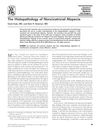
research The Histopathology of Noncicatricial Alopecia
Different types of hair loss have unique features under a microscope, but a doctor's exam is important for accurate diagnosis.
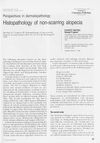
research Histopathology of Non-Scarring Alopecia
The document describes how to tell different types of non-scarring hair loss apart by looking at hair and scalp tissue under a microscope.

research Human Umbilical Cord Mesenchymal Stem Cell-Derived Exosomes Enhance Follicular Regeneration in Androgenetic Alopecia via Activation of Wnt/β-Catenin Pathway
Exosomes from stem cells can help regrow hair better than minoxidil.
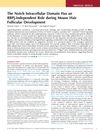
research The Notch Intracellular Domain Has an RBPj-Independent Role During Mouse Hair Follicular Development
The Notch signaling pathway helps in mouse hair development through a noncanonical mechanism that does not rely on RBPj or transcription.
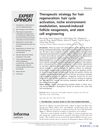
research Therapeutic Strategy for Hair Regeneration: Hair Cycle Activation, Niche Environment Modulation, Wound-Induced Follicle Neogenesis, and Stem Cell Engineering
The conclusion is that hair growth can be improved by activating hair cycles, changing the surrounding environment, healing wounds to create new hair follicles, and using stem cell technology.
Community Join
5 / 169 resultscommunity What is the ultimate hair regrowth protocol
The conversation covers aggressive hair regrowth treatments like Dutasteride, Minoxidil (oral and topical), RU58841, microneedling, and ketoconazole shampoo. It also mentions PRP, laser therapy, GHK-Cu injections, and hormone therapy for maximum regrowth.
community SCUBE3 and GT20029 could be the closet thing to a cure: Hair Follicle Regeneration and Protection Against DHT
SCUBE3 and GT20029 are potential treatments for hair loss, with SCUBE3 stimulating hair growth and GT20029 protecting against DHT. A combined approach using SCUBE3, finasteride or dutasteride, and later GT20029 could provide a comprehensive treatment for androgenetic alopecia.
community Hair loss research is a money grab
Hair loss is linked to DHT, with treatments like finasteride and minoxidil being common but not definitive. Economic interests influence research, and there is potential for new treatments like PP405 and RU58841.
community Physio-metabolic method of treating androgenic alopecia. Cold receptors. The relationship between DHT, cold receptors, minoxidil and antiandrogens.
A method for treating androgenic alopecia using minoxidil, antiandrogens, exercise, and cold exposure to promote hair growth. Environmental factors and lifestyle changes, like diet and exercise, can improve treatment effectiveness.
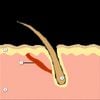
community Physio-metabolic method of treating androgenic alopecia. Cold receptors. The relationship between DHT, cold receptors, minoxidil and antiandrogens
Treating androgenic alopecia with minoxidil, finasteride, and antiandrogens, alongside exercise, cryotherapy, and natural substances to stimulate cold receptors for better hair growth. The method focuses on enhancing treatment effectiveness by considering environmental and behavioral factors and the role of cold receptors and muscle stress.